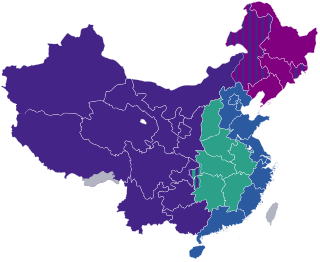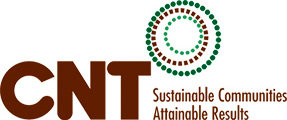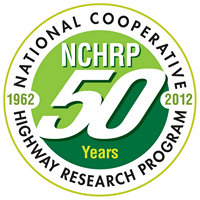Related Research Articles

Transport economics is a branch of economics founded in 1959 by American economist John R. Meyer that deals with the allocation of resources within the transport sector. It has strong links to civil engineering. Transport economics differs from some other branches of economics in that the assumption of a spaceless, instantaneous economy does not hold. People and goods flow over networks at certain speeds. Demands peak. Advance ticket purchase is often induced by lower fares. The networks themselves may or may not be competitive. A single trip may require the bundling of services provided by several firms, agencies and modes.
Cost–benefit analysis (CBA), sometimes also called benefit–cost analysis, is a systematic approach to estimating the strengths and weaknesses of alternatives. It is used to determine options which provide the best approach to achieving benefits while preserving savings in, for example, transactions, activities, and functional business requirements. A CBA may be used to compare completed or potential courses of action, and to estimate or evaluate the value against the cost of a decision, project, or policy. It is commonly used to evaluate business or policy decisions, commercial transactions, and project investments. For example, the U.S. Securities and Exchange Commission must conduct cost-benefit analyses before instituting regulations or deregulations.
In economics, an input–output model is a quantitative economic model that represents the interdependencies between different sectors of a national economy or different regional economies. Wassily Leontief (1906–1999) is credited with developing this type of analysis and earned the Nobel Prize in Economics for his development of this model.

China Western Development, also Great Western Development Strategy or the Open Up the West Program, is a policy adopted for the Western China.

The economics of climate change concerns the economic aspects of climate change; this can inform policies that governments might consider in response. A number of factors make this and the politics of climate change a difficult problem: it is a long-term, intergenerational problem; benefits and costs are distributed unequally both within and across countries; and both the scientific consensus and public opinion on climate change need to be taken into account.
Social return on investment (SROI) is a principles-based method for measuring extra-financial value. It can be used by any entity to evaluate impact on stakeholders, identify ways to improve performance, and enhance the performance of investments.

The Center for Neighborhood Technology (CNT) is a non-profit organization, headquartered in Chicago, Illinois, which is committed to sustainable development and livable urban communities.
Carbon accounting or greenhouse gas accounting refers to processes used to measure how much carbon dioxide equivalents an organization emits. It is used by states, corporations, and individuals to create the carbon credit commodity traded on carbon markets. Examples of products based on forms of carbon accounting may be found in national inventories, corporate environmental reports, and carbon footprint calculators.

A megaproject is an extremely large-scale investment project. According to the Oxford Handbook of Megaproject Management, "Megaprojects are large-scale, complex ventures that typically cost $1 billion or more, take many years to develop and build, involve multiple public and private stakeholders, are transformational, and impact millions of people". However, $1 billion is not a constraint in defining megaprojects; in some contexts a relative approach is needed, such as in developing countries, where a much smaller project could constitute a megaproject. Therefore, a more general definition is "Megaprojects are temporary endeavours characterized by: large investment commitment, vast complexity, and long-lasting impact on the economy, the environment, and society".
The social cost of carbon (SCC) is the marginal cost of the impacts caused by emitting one extra tonne of greenhouse gas at any point in time, inclusive of 'non-market' impacts on the environment and human health. The purpose of putting a price on a ton of emitted CO2 is to aid policymakers or other legislators in evaluating whether a policy designed to curb climate change is justified. The social cost of carbon is a calculation focused on taking corrective measures on climate change which can be deemed a form of market failure. Latest studies calculate costs of more than US$300 per ton of CO2. The Intergovernmental Panel on Climate Change suggested that a carbon price from $135 to $5,500/tCO2 in 2030, and from $245 to $13,000 in 2050, would be needed to drive carbon emissions to stay below the 1.5 °C limit.

The Highway Capacity Manual (HCM) is a publication of the Transportation Research Board (TRB) of the National Academies of Sciences, Engineering, and Medicine in the United States. It contains concepts, guidelines, and computational procedures for computing the capacity and quality of service of various highway facilities, including freeways, highways, arterial roads, roundabouts, signalized and unsignalized intersections, interchanges, rural highways, and the effects of mass transit, pedestrians, and bicycles on the performance of these systems.
The Puget Sound Regional Council (PSRC) is a metropolitan planning organization that develops policies and makes decisions about transportation planning, economic development, and growth management throughout the four-county Seattle metropolitan area surrounding Puget Sound. It is a forum for cities, towns, counties, transit agencies, port districts, Native American tribes, and state agencies to address regional issues.
EBP US, formerly known as Economic Development Research Group, is an American company that provides economic analysis and research to support planning and policy in the transportation, economic development, and sustainable energy sectors. Based in Boston, and with several satellite offices in the US, the firm is part of the EBP family of companies, with full-service offices in Switzerland, Germany, China, Brazil, and Chile.
An economic impact analysis (EIA) examines the effect of an event on the economy in a specified area, ranging from a single neighborhood to the entire globe. It usually measures changes in business revenue, business profits, personal wages, and/or jobs. The economic event analyzed can include implementation of a new policy or project, or may simply be the presence of a business or organization. An economic impact analysis is commonly conducted when there is public concern about the potential impacts of a proposed project or policy.

Tangier's economy is the third biggest of all Moroccan cities, after the economic capital Casablanca and the city of Fez. Tangier is Morocco's second most important industrial center after Casablanca. The industrial sectors are diversified: textile, chemical, mechanical, metallurgical and naval. Currently, the city has four industrial parks of which two have the status of free economic zone.

The Global Earthquake Model (GEM) is a public–private partnership initiated in 2006 by the Global Science Forum of the OECD to develop global, open-source risk assessment software and tools. With committed backing from academia, governments and industry, GEM contributes to achieving profound, lasting reductions in earthquake risk worldwide by following the priorities of the Hyogo Framework for Action. From 2009 to 2013 GEM is constructing its first working global earthquake model and will provide an authoritative standard for calculating and communicating earthquake risk worldwide.

The National Cooperative Highway Research Program (NCHRP) conducts research in problem areas that affect highway planning, design, construction, operation, and maintenance in the United States. Spearheaded by the Transportation Research Board (TRB), part of the National Academies of Sciences Engineering and Medicine, it is jointly supported by federal agencies, state departments of transportation, and other nonprofit organizations.
Urban freight distribution is the system and process by which goods are collected, transported, and distributed within urban environments. The urban freight system can include seaports, airports, manufacturing facilities, and warehouse/distribution centers that are connected by a network of railroads, rail yards, pipelines, highways, and roadways that enable goods to get to their destinations.
Infrastructure-based economic development, also called infrastructure-driven development, combines key policy characteristics inherited from the Rooseveltian progressivist tradition and neo-Keynesian economics in the United States, France's Gaullist and neo-Colbertist centralized economic planning, Scandinavian social democracy as well as Singaporean and Chinese state capitalism: it holds that a substantial proportion of a nation’s resources must be systematically directed towards long term assets such as transportation, energy and social infrastructure in the name of long term economic efficiency and social equity.
Triple bottom line cost-benefit analysis (TBL-CBA) is an evidence-based economic method that combines cost–benefit analysis (CBA) and life-cycle cost analysis (LCCA) across the triple bottom line (TBL) to weigh costs and benefits to project stakeholders. The TBL-CBA process quantifies total net present value, return on investment, and project payback. TBL-CBA uses location-specific data to give asset owners and design professionals the flexibility and capability to provide a rigorous analysis of investment alternatives through all stages of planning and design.
References
- ↑ "Archived copy" (PDF). Archived from the original (PDF) on 2008-08-20. Retrieved 2008-10-09.
{{cite web}}: CS1 maint: archived copy as title (link) A Guide to State DOT Consideration of Economic Development Potential in Planning, ICF Consulting for the AASHTO Standing Committee on Planning, NCHRP 8-36-60, March 2007 - ↑ "Archived copy". Archived from the original on 2011-07-28. Retrieved 2008-10-09.
{{cite web}}: CS1 maint: archived copy as title (link) Best Practices in Using Programmatic Strategies in Statewide Transportation Plans, Wilbur Smith Associates for AASHTO, NCHRP Project 8-36-67, 2007 - ↑ "Archived copy" (PDF). Archived from the original (PDF) on 2006-01-14. Retrieved 2008-10-09.
{{cite web}}: CS1 maint: archived copy as title (link) Return on Investment on Freight Rail Capacity Improvement, Cambridge Systematics for AASHTO, NCHRP Project 8-36-43, 2005 - ↑ "Guide to Quantifying the Economic Impacts of Federal Investment in Large-Scale Freight Transportation Projects. Section 10: Toolbox". Archived from the original on 2008-09-21. Retrieved 2008-10-08. Guide to Quantifying the Economic Impacts of Freight Projects, US Department of Transportation, 2006
- ↑ The Cost of Highway Limitations and Traffic Delay to Oregon's Economy, Oregon Business Council, 2007
- ↑ The Cost of Congestion to the Economy of the Portland Region, Portland Metro, 2005
- ↑ "Archived copy" (PDF). Archived from the original (PDF) on 2009-01-24. Retrieved 2008-12-10.
{{cite web}}: CS1 maint: archived copy as title (link) Time is Money: The Economic Benefits of Transit Investment, Chicago Metropolis 2020, 2008 - ↑ Weisbrod, G. "Models to predict the economic development impact of transportation projects," Annals of Regional Science, Volume 42, Number 3 / September 2008
- ↑ Alstadt, B. “A Generalized Approach for Assessing the Direct User Impacts of Transportation Projects,” Transportation Research Board, Annual Conference Proceedings, January 2008